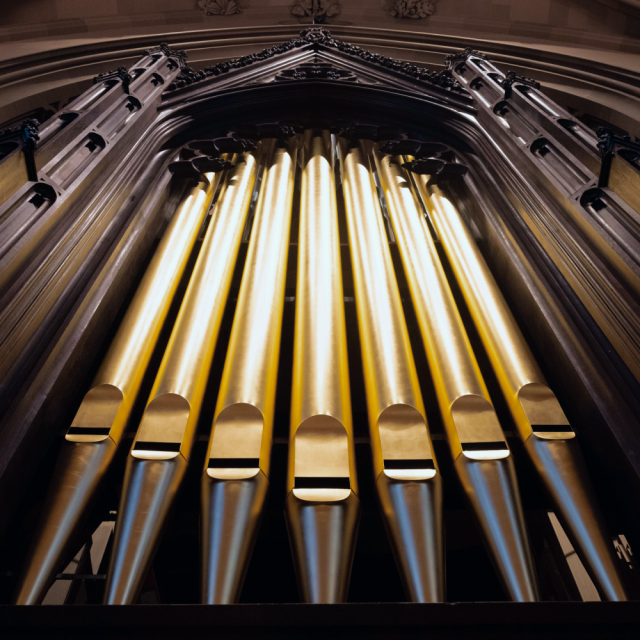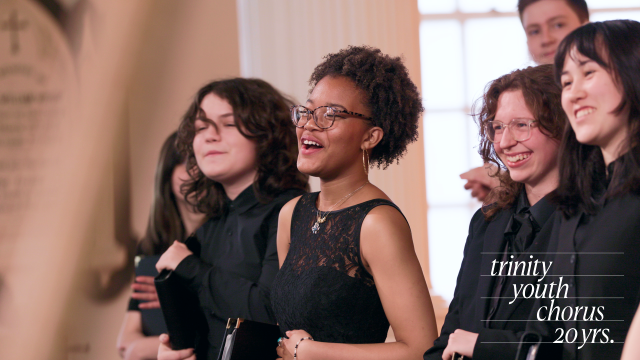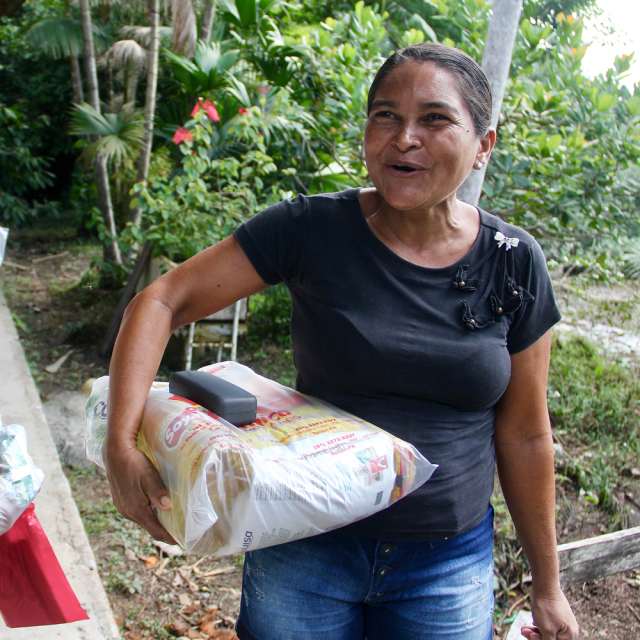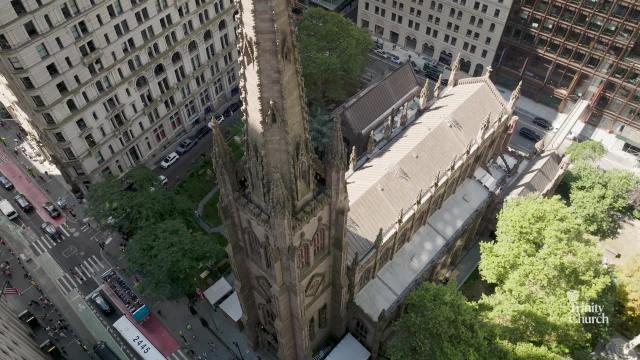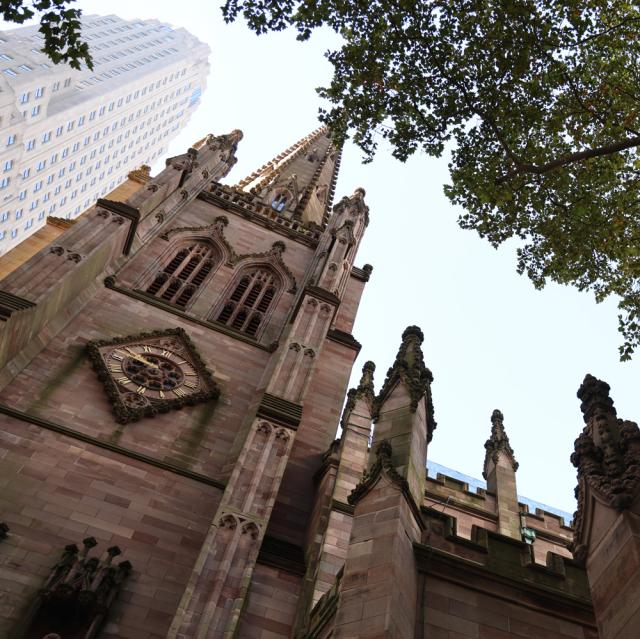Doubt Is the Place God Meets Us
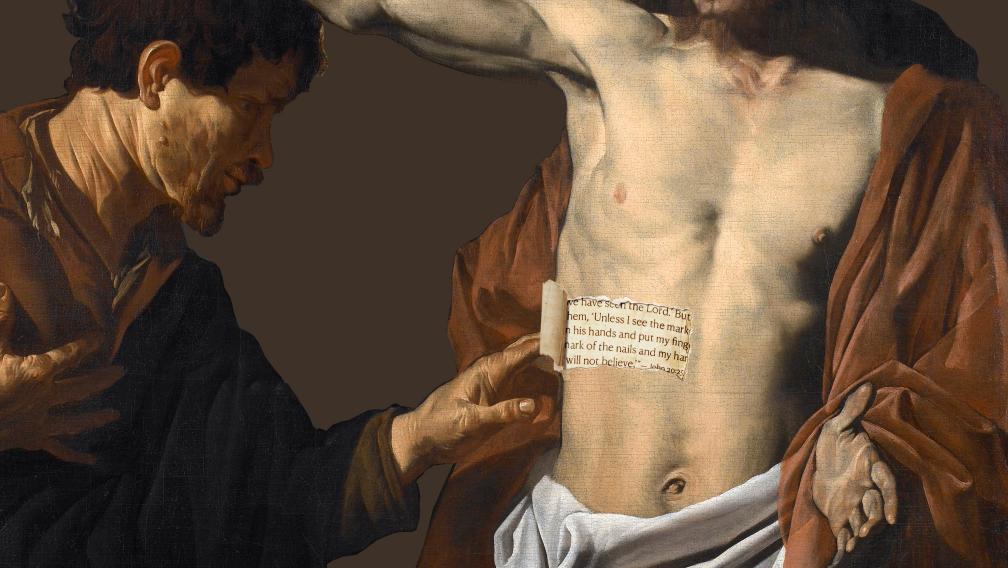
“So the other disciples told [Thomas], ‘We have seen the Lord.’ But he said to them, ‘Unless I see the mark of the nails in his hands and put my finger in the mark of the nails and my hand in his side, I will not believe.’” — John 20:25
The disciple Thomas is known, perhaps unfairly, as a doubter. His famous scene in Scripture — refusing to believe the miracle of Easter without experiencing the risen Jesus for himself — is part of a series of encounters following the resurrection in the Gospel of John. These interwoven vignettes show Jesus’s followers seeing, touching, and then believing, as news of his resurrection spreads. To focus so narrowly and negatively on Thomas’s doubt is to miss the point: The center of this narrative is Jesus, not Thomas.
It starts with Mary Magdalene, who finds the stone seal rolled away from Jesus’s tomb and thinks his body has been stolen. She tells the disciples Peter and John, and they run over to confirm her suspicion: The tomb is empty.
Mary is standing in the garden outside when Jesus appears beside her and asks, “Why are you weeping?” Mary doesn’t recognize him at first, but when Jesus calls her by name, she knows it’s her teacher. Once again, Mary delivers news to the disciples when she announces, “I have seen the Lord.”
Later that night, the disciples are fearfully locked away in a house — most likely not sure what to make of the day’s events — when Jesus appears, this time among them. Unfortunately for Thomas, he had stepped out. “We have seen the Lord,” the disciples tell him when he returns, to which he responds, Unless I see it for myself, I won’t believe it.
Later that week, Jesus shows up again, and this time Thomas is in the room. “Put your finger here and see my hands,” Jesus says to Thomas. “Reach out your hand and put it in my side.” Jesus isn’t angry with Thomas; he’s generous with him. He doesn’t shame him for questioning, but he gives Thomas exactly what he needs to believe.
“My Lord and my God!” Thomas says, in a flash of revelation. This so-called doubter gives us the most complete proclamation of faith in the whole of John’s Gospel. Thomas sees God fully revealed to him, and to all of us, in Jesus.
His powerful profession echoes the line that opens John’s Gospel: “In the beginning was the Word, and the Word was with God, and the Word was God.” Jesus is the Word of God. Jesus is what God has to say to us.
“The affirmation that Jesus is the Christ [that is, God revealed to us] is an act of faith and consequently of daring courage,” writes theologian Paul Tillich. “It is not an arbitrary leap into darkness but a decision in which elements of immediate participation and therefore certitude are mixed with elements of strangeness and therefore incertitude and doubt. But doubt is not the opposite of faith; it is an element of faith. Therefore, there is no faith without risk . . .”
Doubt is not at odds with faith; it’s part of it! Doubt does not diminish our spiritual lives; it enriches them. Doubt does not separate us from God; doubt is the very place God meets us. Like Jesus’s early followers, each of us experiences God in our own way, in our own time. Simply put, doubt is a gift.
May we be people of faith deep enough to include doubt. We did not see or touch the risen Jesus. We were not there, but someone told us the story. And in that well-worn but always scandalous, forever breathtaking tale, we heard Jesus calling our name. We heard our name, and we believed.
As we find ourselves in Thomas’s shoes, wrapping our hearts and heads around resurrection in a world fixated on its own destruction, may we receive Jesus when he comes. Alongside our uncertainty and fear, may we have the courage to say, “My Lord and my God!”
The Rev. Yein Kim
Mother Yein Kim is priest and associate director, Sacramental Life and Membership.
Read all of Sunday’s scriptures
Step Into the Story
Here are some ways to think about doubt differently.
Theology
“When [doubts seem unceasing],” writes Buddhist meditation teacher Phillip Moffitt, “it is sometimes fruitful to ask yourself: Am I clinging to an old view of myself or of how life is supposed to be? Does this view or attitude need to die?”
History
Thomas’s story didn’t end with John’s Gospel. Tradition holds that Thomas went on to India, where he founded a community of Christians that continues to the present day.
Poetry
Anglican poet Malcolm Guite celebrates “doubting” Thomas as “the courageous master of the awkward question” who “spoke the words others dared not say.”
Visual Art
Chinese artist James He Qi depicts The Doubt of St. Thomas as an intimate moment, and one set against the backdrop of the other disciples, who are still confused even after seeing Jesus first.
Music
In the bluegrass band Nickel Creek’s “Doubting Thomas,” lead singer Chris Thile narrates how doubt and fear are never far from daily life, even as we strive to show others signs of hope and truth.

